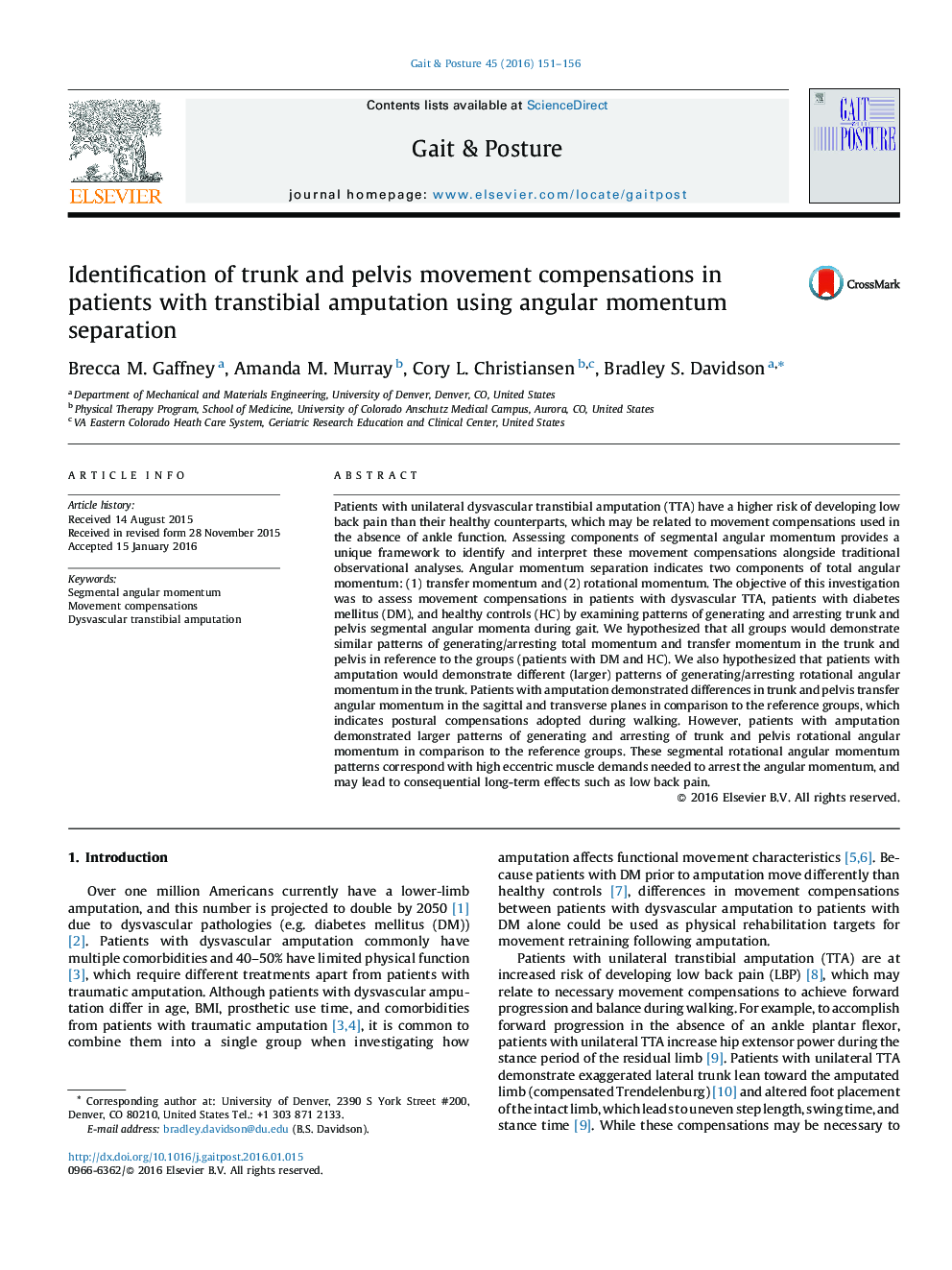| کد مقاله | کد نشریه | سال انتشار | مقاله انگلیسی | نسخه تمام متن |
|---|---|---|---|---|
| 4055997 | 1603850 | 2016 | 6 صفحه PDF | دانلود رایگان |
• Examination of transtibial amputees through angular momentum of pelvis and trunk.
• Inference on motion and effort used to supplement observational analyses in clinic.
• Movement compensations linked to consequential muscle demand.
Patients with unilateral dysvascular transtibial amputation (TTA) have a higher risk of developing low back pain than their healthy counterparts, which may be related to movement compensations used in the absence of ankle function. Assessing components of segmental angular momentum provides a unique framework to identify and interpret these movement compensations alongside traditional observational analyses. Angular momentum separation indicates two components of total angular momentum: (1) transfer momentum and (2) rotational momentum. The objective of this investigation was to assess movement compensations in patients with dysvascular TTA, patients with diabetes mellitus (DM), and healthy controls (HC) by examining patterns of generating and arresting trunk and pelvis segmental angular momenta during gait. We hypothesized that all groups would demonstrate similar patterns of generating/arresting total momentum and transfer momentum in the trunk and pelvis in reference to the groups (patients with DM and HC). We also hypothesized that patients with amputation would demonstrate different (larger) patterns of generating/arresting rotational angular momentum in the trunk. Patients with amputation demonstrated differences in trunk and pelvis transfer angular momentum in the sagittal and transverse planes in comparison to the reference groups, which indicates postural compensations adopted during walking. However, patients with amputation demonstrated larger patterns of generating and arresting of trunk and pelvis rotational angular momentum in comparison to the reference groups. These segmental rotational angular momentum patterns correspond with high eccentric muscle demands needed to arrest the angular momentum, and may lead to consequential long-term effects such as low back pain.
Journal: Gait & Posture - Volume 45, March 2016, Pages 151–156
